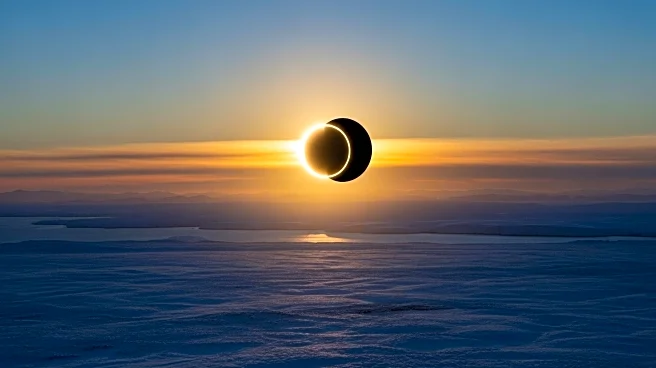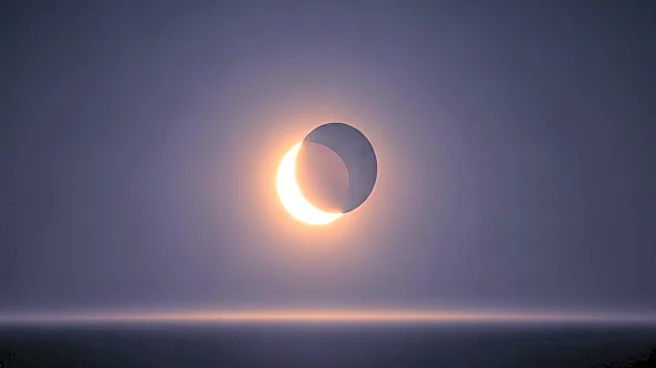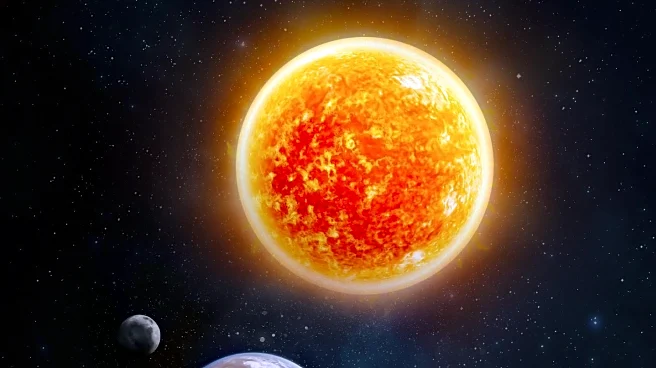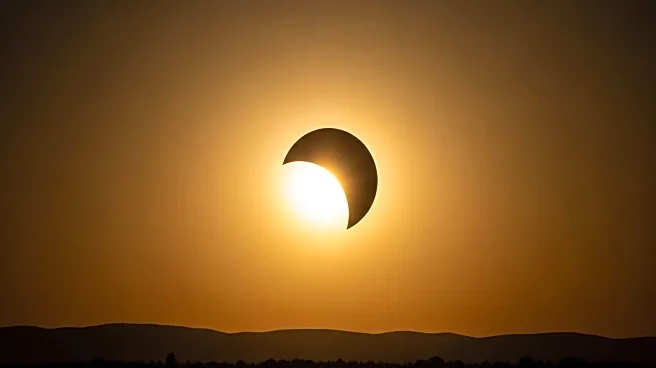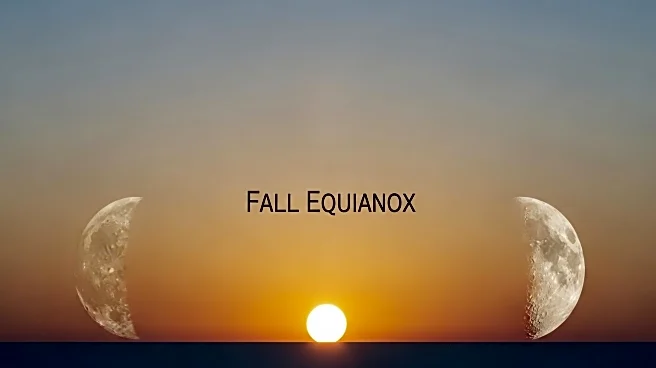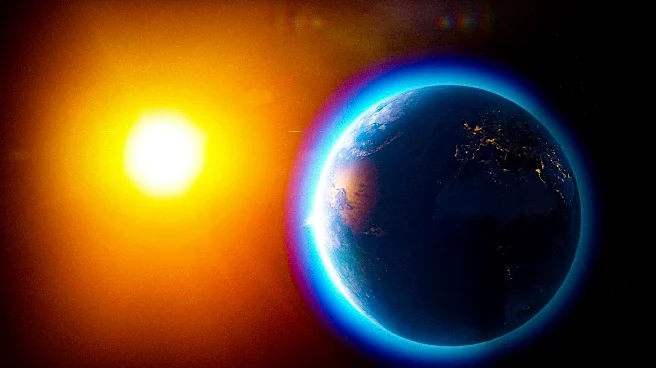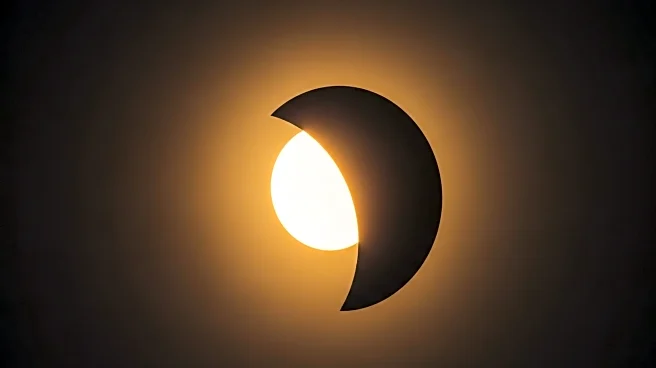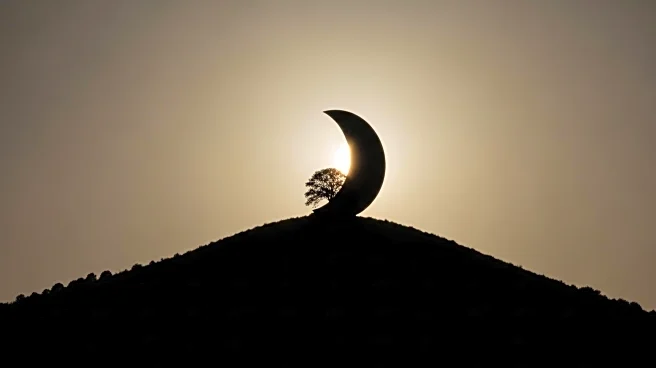What's Happening?
On September 21, 2025, a partial solar eclipse will occur, visible from select regions including Antarctica, Australia, and New Zealand. The eclipse will begin at 1:29 p.m. EDT and end at 5:53 p.m. EDT, with the maximum phase expected at 3:41 p.m. EDT. During this time, the Moon will cover a portion of the Sun, creating a dramatic shadow across parts of the Earth. The event will not be visible in India, as it will occur after sunset there. Astronomy enthusiasts in non-visible regions can follow the phenomenon via online live streams.
Why It's Important?
Solar eclipses are rare events that provide unique opportunities for scientific study and public engagement. This partial eclipse allows observers in the Southern Hemisphere to experience a significant astronomical event. It also serves as a reminder of the importance of safety precautions when viewing solar eclipses. Regular sunglasses are not safe for viewing; eclipse glasses with a special solar filter must be worn to prevent eye damage. The event highlights the need for public awareness about safe viewing practices and the cultural significance of eclipses.
What's Next?
Following this eclipse, the next solar event will be an annular eclipse on February 17, 2026, visible from Antarctica, with partial visibility in other regions. A total solar eclipse is expected in August 2026, offering a more dramatic viewing experience. These events will continue to engage the global community in astronomical observation and research, fostering a deeper understanding of celestial phenomena.

